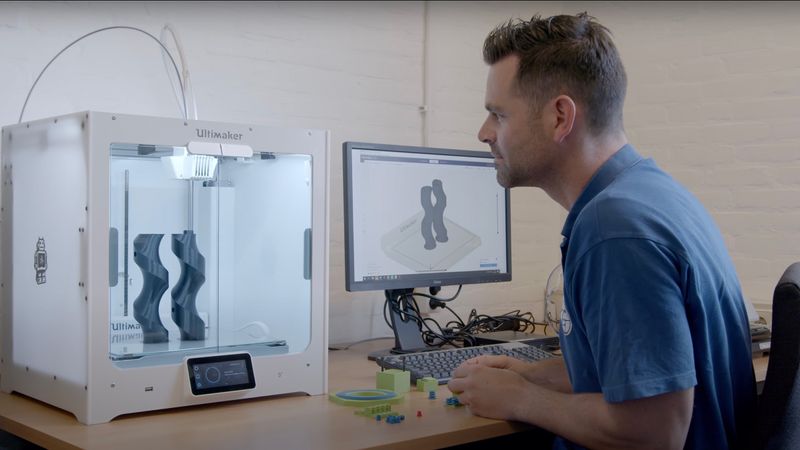Trivium: 3D printing replacement parts for automated packaging lines
Get inspired by 3 innovative applications that allowed Trivium to keep their can production line running by 3D printing replacement parts and molds.
Trivium specializes in sustainable and recyclable metal packaging.
Operating out of more than 60 countries, with over 7,500 employees, they offer a wide range of innovative metal packaging services to meet their customers’ product and brand requirements.
We visited Trivium’s plant in Deventer, the Netherlands, to discover how the engineering team were using Ultimaker 3D printers to save costs and keep their lines running efficiently.
Conveyor Infeed worm
An infeed worm works as a precision-engineered timing screw on a transport system. As it spins, it quickly and accurately spaces out containers along the conveyor belt.
The original part for Trivium's packaging machine had worn out and was no longer available from the supplier. Therefore, Paul Klopper, one of the Technical Specialists at the Dutch plant turned to 3D printing for a solution.
He remodelled the part and split it in two pieces so they could be printed together on the Ultimaker S5 build plate. He then connected the two pieces with a metal rod so it could be installed on the machine.
Design validation was achieved with an ABS print. However, this wore out at a similar rate to the original part. On his next iteration, Paul printed the worm in carbon fiber-reinforced nylon, which proved to be a more wear resistant replacement part than the original.
This perfectly demonstrates the power of 3D printing with different materials. You can begin testing with a low-cost material such as Tough PLA or ABS to validate the design. And then switch to an engineering-grade material to create a part with properties that outperforms the original.
Now, whenever a new part is needed, Paul's design is already validated and available in Trivium's digital inventory, ready to be 3D printed on demand. This not only ensures they can keep their older packaging machines running. It also cuts down on the need for replacement part storage.
Molds for silicone seals
Creating molds for silicone seals or gaskets is an often-overlooked 3D printing application.
But the engineers at Trivium needed to replace so many seals for different machines. These were either too expensive or no longer available.
Instead, they turned to 3D printing. Using ABS printed with a 60-micron layer height, the team were able to create smooth and accurate molds for silicone. These could then be reused, saving time and money.
The Technical Specialist responsible for this innovation, Dylan Bar, said:
We can design and print a new mold and have it by the next day.
Conveyor sensor wheel
Dual extrusion 3D printing makes it possible to combine two materials in the same print.
Paul Klopper used this benefit to his advantage when replacing the broken wheel on their tachometer.
This handheld device allows operators to measure the speed of conveyor belts at different places along the packaging line. Doing so accurately makes it easier to synchronize different parts of the transportation system and helps to ensure continuous production.
After modeling the wheel in CAD, Paul printed it with a rubber-like material: TPU-95A. This meant it would have improved grip on the surface of the conveyor.
Printable in just 3 hours, it means Paul’s team no longer need to replace the whole device. And it also demonstrates how 3D printing offers an incredibly flexible way to fabricate solutions to almost any challenge that might occur on the production line.
Get more ideas for line optimization
Beyond these three examples from Trivium, there are hundreds of other 3D printing applications that Ultimaker customers are using at their plants.
Click below to get more inspiration (with downloadable examples) on how you could improve your plant’s productivity and OEE with 3D printing.
